NIKKOR The Thousand and One Nights No.95

The beginning of ultra-high resolution
-Micro-NIKKOR C 5cm F3.5-
In Tale 95, we'll finally take a look at the Micro-NIKKOR C 5cm F3.5, the first micro lens for the Nikon S and L-mount cameras. It all began with this truly legendary, one-of-a-kind lens, born of a strong bond with Dr. Zyun Koana. In this Tale we will reconsider the Micro-NIKKOR C 5cm F3.5. To understand the heights achieved by Koana and the two greats, Hideo Azuma and Zenji Wakimoto, we will do so in its historical context.
By Haruo Sato
I. R-Nikkor and "Takekurabe"
As I mentioned in Tales 25, 26, and 85, the first Micro-NIKKOR lens was the result of an encounter between Zyun Koana, a professor at the University of Tokyo, and Hideo Azuma and Zenji Wakimoto, who worked at Nippon Kogaku (now Nikon). Koana and Azuma were university classmates, and Koana was Wakimoto's mentor at the university. As a result of their collaboration, a number of prototypes were produced with "R Nikkor 5cm F3.5" on the nameplates. What did the "R" mean? It is said that the "R" indicated "reproduction". While it is unclear whether the meaning of the "R" was ever officially announced, the optical design document (report) definitely included the handwritten note, "For 1/1x -1/6x reproduction". This indicates the theory that "R" was for "reproduction" is correct and I also believe it to be so. If Koana's test results had been satisfactory, the decision to release the lens would have been made, and it would have been released with the noteworthy addition of the "R". However, the possibility that the lens might be confused with a previously developed lens for X-ray (Roentgen radiation) photography was suggested. It is, therefore, said that the name of the lens actually released was Micro-NIKKOR. So, when did development of the lens begin? According to the prototype log, prototype production began (prototype drawings were issued) on April 22, 1952. Naturally, drawings are not made until after the design is complete. Therefore, it is likely that Koana, Azuma, and Wakimoto began working on the concept no later than 1950 or 1951. What is clear is that Koana's records indicate his research on ultra-micro photography began in 1952. It is highly likely the R Nikkor prototype was completed by 1954. The newly completed R Nikkor was then entrusted to Koana, who used the R Nikkor for ultra-micro photography research using an ultra-high resolution optical system, the results of which were then presented at an academic conference in the U.S. The world was amazed, and many researchers began to imagine the future of ultra-high resolution. The way Koana presented the future of ultra-high resolution in an easy-to-understand way is well-known as the Takekurabe anecdote. The R Nikkor 5cm F3.5 guaranteed a resolution of 100 lines/mm at the center of the frame, even at maximum aperture. Stopping down the aperture further increases resolution, with the average resolution across the frame reaching its peak in the f/4 to f/5.6 range. After numerous tests, Koana ultimately captured his reference photos at f/5.6. He also used a green filter to reduce the effects of chromatic aberration. Some thought the lens had the potential to achieve a resolution of nearly 200 lines/mm. In 1955, Koana finally created a microcard (125 x 75 mm) at a reduction ratio of 1/13.5x from the Iwanami Bunko edition of Ichiyo Higuchi's 70-page novella, Takekurabe. A copy of the American academic journal in which the presentation was published and the Takekurabe microcard were exhibited at a camera show held in April of the same year in New York as proof of the high-resolution performance of the Micro-NIKKOR C 5cm F3.5. The lens must have made headlines at the New York camera show. Meanwhile, mass production of the Micro-NIKKOR C 5cm F3.5 began on May 4, 1956. The Micro-NIKKOR C 5cm F3.5 for Nikon S cameras was released that same year. To mark this spectacular release, a lens catalog featuring Koana's Takekurabe microcard was also published. The challenge to achieve ultra-high resolution would eventually take a major leap from photographic lenses to play a major role in the development of VLSIs. Though perhaps a slight exaggeration, it might be said that the smartphones and computers we use today, as well as generative AI, were the result of the painstaking research of three people: Zyun Koana, Hideo Azuma, and Zenji Wakimoto. I offer my utmost praise and respect to these true pioneers who established a foundation for technological development not only for today, but well into the future.

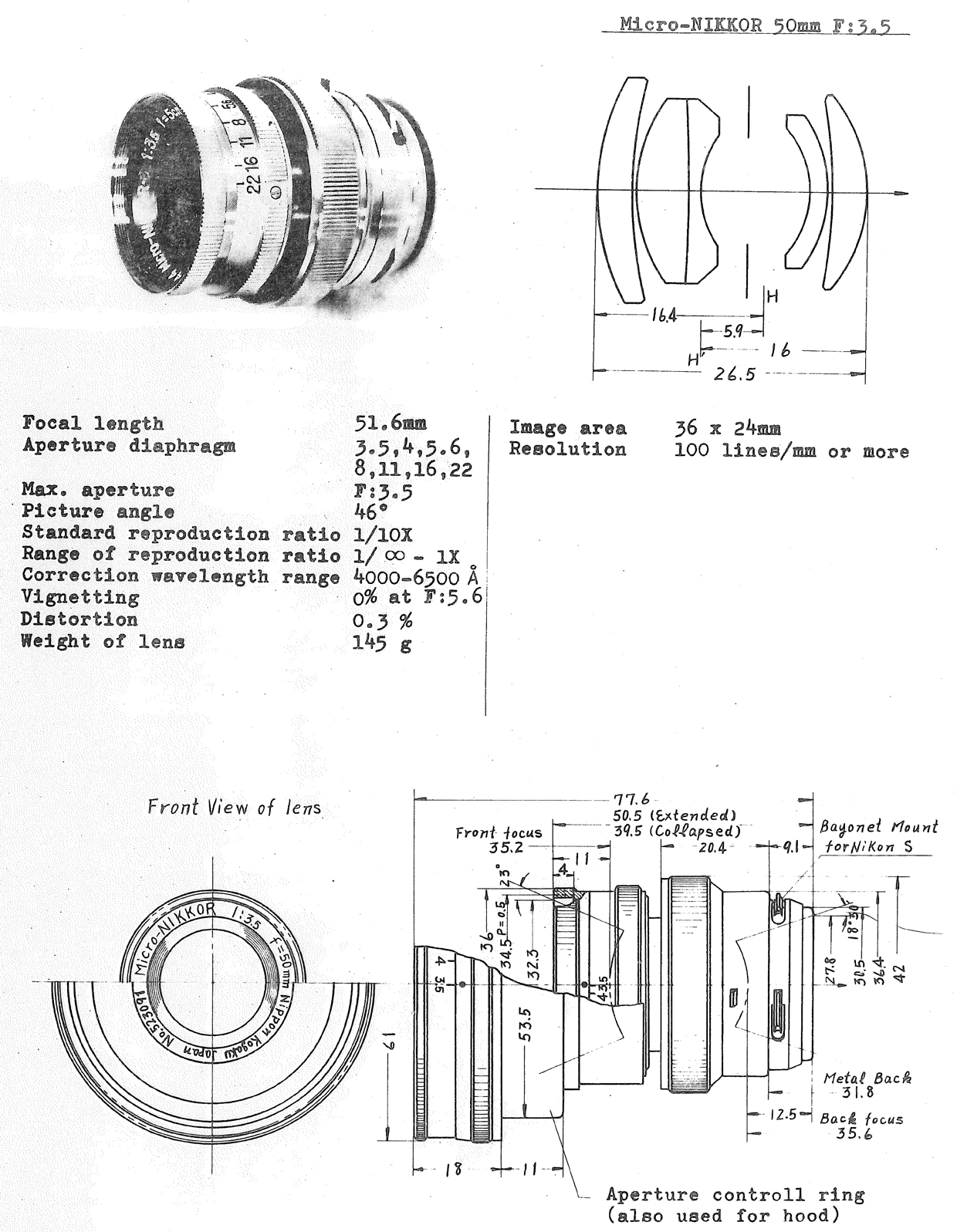
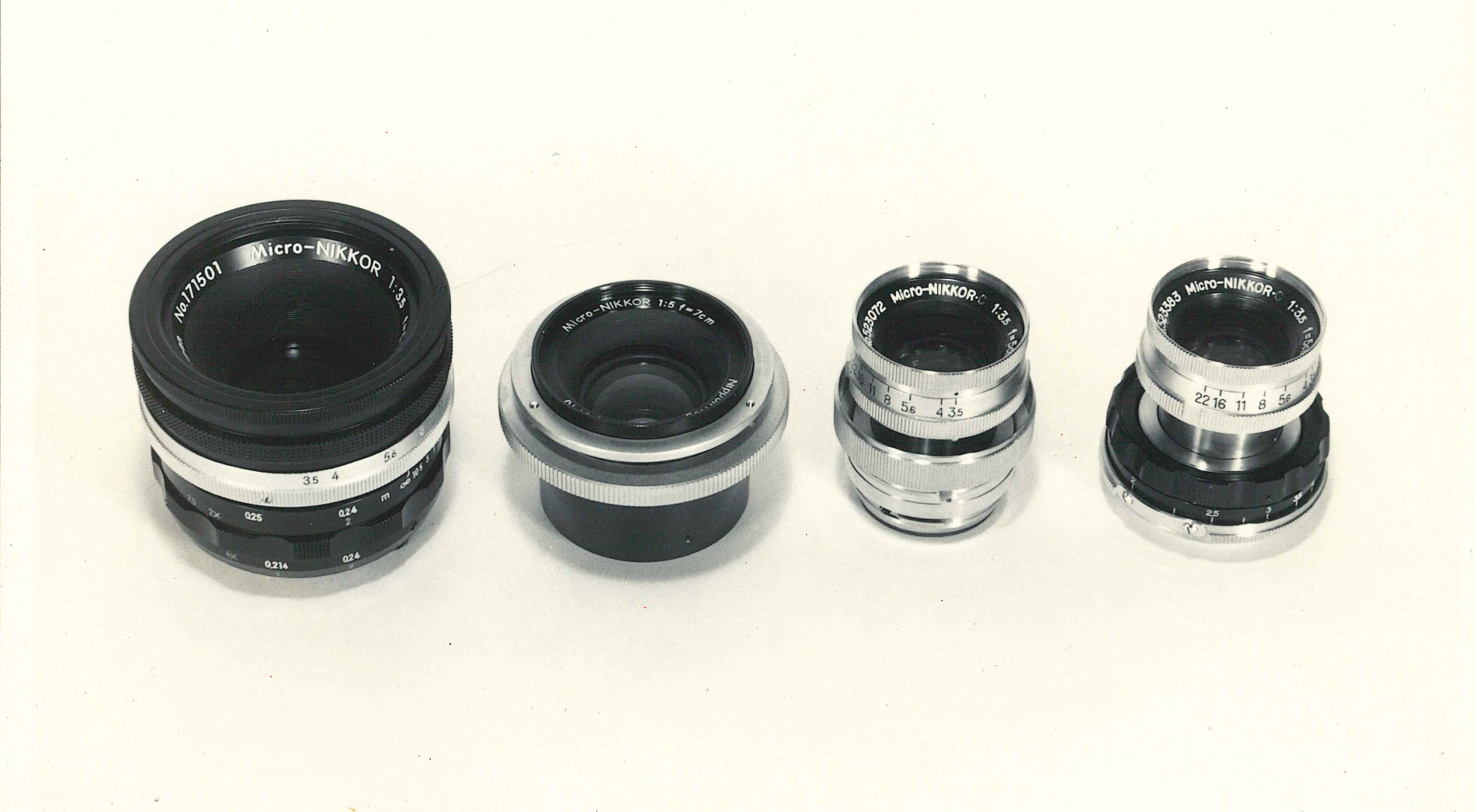
II. Lens construction and characteristics
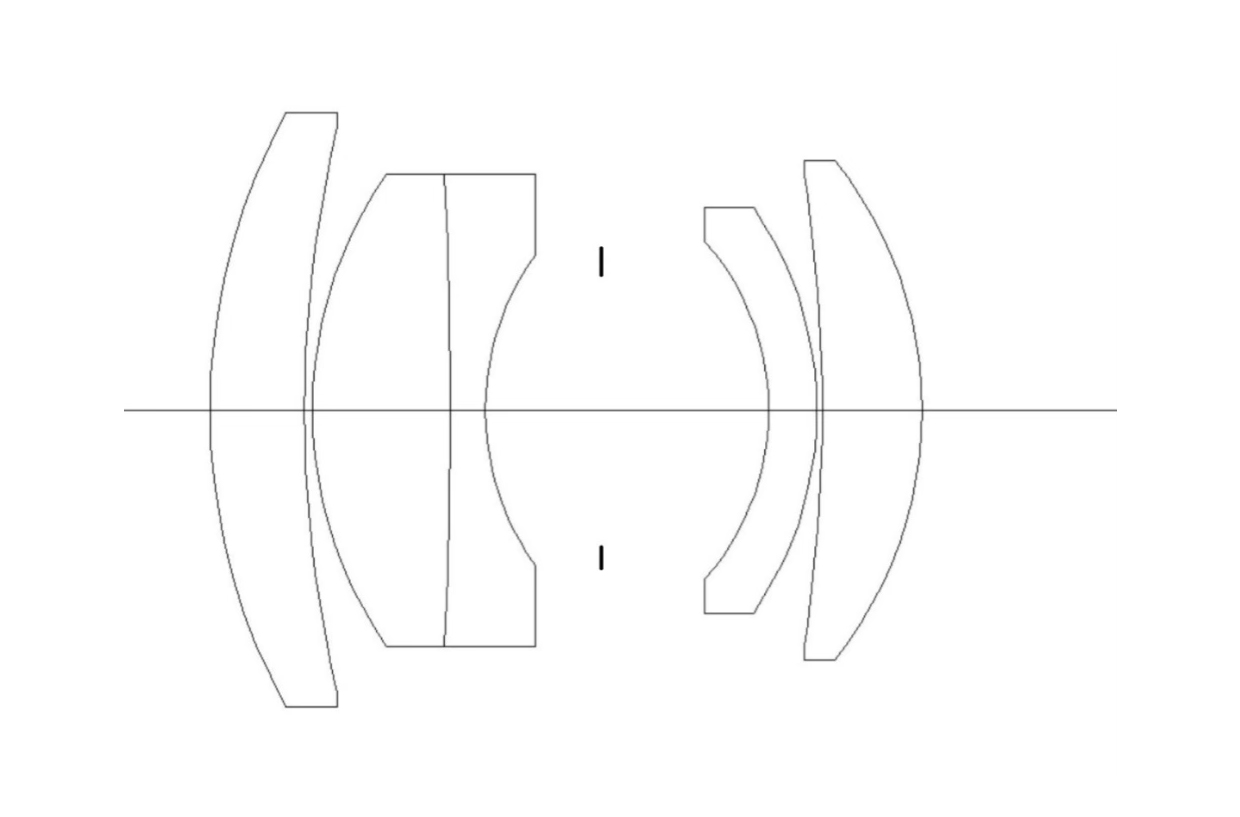
Now let's look at a cross-section of the Micro-NIKKOR C 5cm F3.5 (Fig. 1). Please forgive me if the following is quite technical. This cross-section shows a typical Xenotar-type optical system. Just as with the front group in a Gauss structure, elements in front of the aperture consist of a convex element and a convex-concave doublet. The concave element that is part of the doublet has a higher refractive index than does its partner, the convex element, correcting not only chromatic aberration, but spherical aberration as well. The rear group behind the aperture consists of two separate elements, one concave and one convex. Just as with the front group, the concave element has a higher refractive index than does the convex element. This use of glass is considered the "old" way of correcting chromatic aberration that is also effective at correcting spherical aberration and coma. However, as the Petzval sum tends to increase, it does have the disadvantage of making curvature-of-field correction difficult. In addition, the optical glass used does not contain any lanthanum (La), so is considered "old" glass (made of materials historically used in the making of glass).
Let's compare the differences in design between Micro-NIKKOR C 5cm F3.5 and Micro Nikkor 55mm F3.5, which was later adapted for the F mount by increasing the focal length by 5 mm. Fig. 2 is a cross-section of the Micro Nikkor 55mm F3.5 for the F mount.
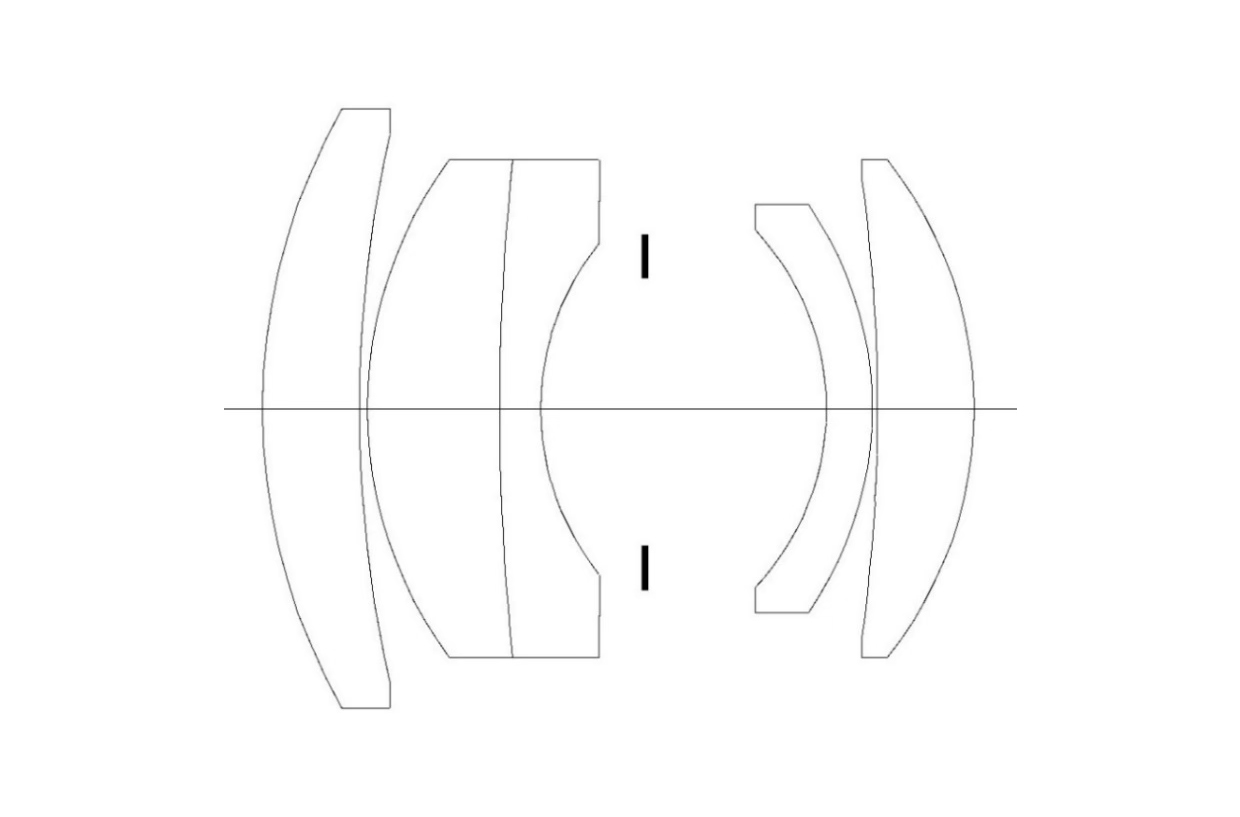
In comparing the two designs, the only noticeable difference is the orientation of cemented surfaces. A closer comparison of the optical systems naturally presents other differences, but there are no other major differences between the two cross-sections. The glass materials used for the G2/G3 convex-concave doublet in the Micro Nikkor 55mm F3.5 do have a higher refractive index than those used for the same doublet in the Micro-NIKKOR C 5cm F3.5. This is the difference between glass materials available in the 1960s versus those available in the 1950s. Using new glass materials available at the time was part of Wakimoto's efforts to refine the Micro-NIKKOR design for the F mount. The effective increase in refractive index is thought to have resulted in an increased radius of curvature and a reversal in the orientation of the curvature of the cemented surface.
III. Design performance and evaluation
First let's look at design data. As I have always stated, evaluations are both subjective and relative. Please use my own evaluations merely as reference.
This lens is constructed as a typical Xenotar photographic objective lens. As I mentioned before, the difference between Gaussian and Xenotar lenses is the structure of the rear group. The rear group in a Xenotar structure consists of two elements, one concave and one convex. This might seem to make the Xenotar structure inferior to the Gaussian structure. However, if high resolution is the goal, the Xenotar structure is in no way inferior.
Let's take a closer look at the characteristics of Micro-NIKKOR C 5cm F3.5 aberration correction at different reproduction ratios (magnifications). Before we do that, let's take a quick look at the standard magnification for which the lens was designed. With most camera lenses, the design standard is often somewhere in the range from infinity to a magnification of -1/30x. However, the original Micro-NIKKOR was different. The recommended magnification was provided in a handwritten report signed by Azuma: "Use at magnifications of -1/16x to -1x (life size)." Therefore, the design standard must be within this range. Until now, the "Design performance and evaluation" portion of NIKKOR The Thousand and One Nights has focused on performance at infinity. Strictly speaking, however, emphasizing evaluations of performance at infinity is beside the point with micro lenses. However, as these lenses are marketed as products that can be used for shooting at infinity, I would like to look at aberration performance at infinity and close-up (thought to be the design standard), and at rendering performance and residual aberration up to a magnification of life size.
We'll begin with aberration performance at infinity. At first glance, it is surprising to see how little residual aberration there is. Residual aberration of all types is comparable to that of F-series Micro- NIKKOR lenses, and, in my view, is an order of magnitude less than the standard residual aberration for photographic lenses of that time. Spherical aberration reflects the balance preferred by Wakimoto with only very slight overcorrection at the extreme edge of the aperture. There is also a little positive curvature of field remaining. Lateral aberration at each image height shows a very small degree of inward coma. At -0.06%, there is almost no distortion, even at the maximum angle of view. This perfectly reflects Wakimoto's signature aberration balance. Please allow me to explain a little about why Wakimoto's balance is so advantageous. For symmetrical objective lenses, there is a qualitative principle regarding aberration fluctuations caused by changes in shooting distance. Wakimoto understood this principle better than anyone, so he established the best method of suppressing these fluctuations in aberration. Basically, there is a qualitative tendency in the way aberration fluctuates with changes in magnification when the entire lens is extended. Therefore, there is a solution for achieving the optimal degree of aberration correction at infinity. This solution was the "Wakimoto balance". Wakimoto had a strong conviction in designing Micro-NIKKOR lenses. It was to ensure maximum resolution at all shooting distances. His conviction can also be seen in the way he balanced aberration.
Next is aberration performance at short distances. We can see there is almost no fluctuation in aberration even at magnifications beyond -1/10x. This is to be expected of a Micro-NIKKOR lens. As a result, this lens exhibits extremely little fluctuation at short distances. Once the magnification exceeds -1/10x, fluctuations in aberration gradually become noticeable. Spherical aberration and curvature of field begin to shift to the negative direction, and inward coma disappears completely. Spherical aberration reaches full correction at magnifications of between -1/10x and -1/4x. Asymmetrical coma is almost completely eliminated, and lateral aberration correction is the best balanced of all shooting distances. Curvature of field is also nearly completely eliminated, and a strict comparison finds minimal astigmatism as well. Aberration characteristics at this magnification were likely Koana's goal, or in other words, the design standard. At a magnification of -1/2x, both spherical aberration and curvature of field begin to shift to the negative direction, and off-axis inward coma switches to outward coma. Second-order dispersion of colors also increases for slightly softer image quality. The change in spherical aberration is not very noticeable when extended to a magnification of -1x, but curvature of field and astigmatism shift significantly to the negative direction. The tendency toward outward coma off-axis is even more noticeable. However, primary chromatic aberration remains good. The issue here is imaging performance when photographing flat objects. The best imaging position at each image height does not align along a single plane. However, when shooting at a magnification of -1x, the depth of field becomes very shallow. When photographing a three-dimensional object, there is no consistent image plane like there is when photographing a flat object. Further, even when photographing a flat object such as printed material, the depth of field is so shallow that, unless you use even a collimator, it is not possible to accurately keep the object parallel to the image plane. As you can see, the impact of out-of-focus images is far greater than the lens' residual aberration in such situations.
IV. Verifying the rumor of 200+ lines/mm resolution
When Koana so beautifully reproduced Takekurabe with the Micro-NIKKOR C 5cm F3.5, he is said, either personally or through rumor, to have described the lens as capable of resolution higher than 200 lines/mm. Is this true, or was it an exaggeration? I'm sure you would all like to know. If it is true, I'd like to verify it beginning with design values, taking shooting conditions at the time into account. Koana took the photo at f/5.6 using a green monochrome filter. I will consider performance assuming the image was captured under D-line monochromatic light at a magnification of around -1/4x.
First, let's look at the results of a wave-optical MTF simulation at 100 lines/mm under these conditions. The horizontal axis represents image height and the vertical axis contrast. Of course, the maximum image height is y = 21.63 mm.
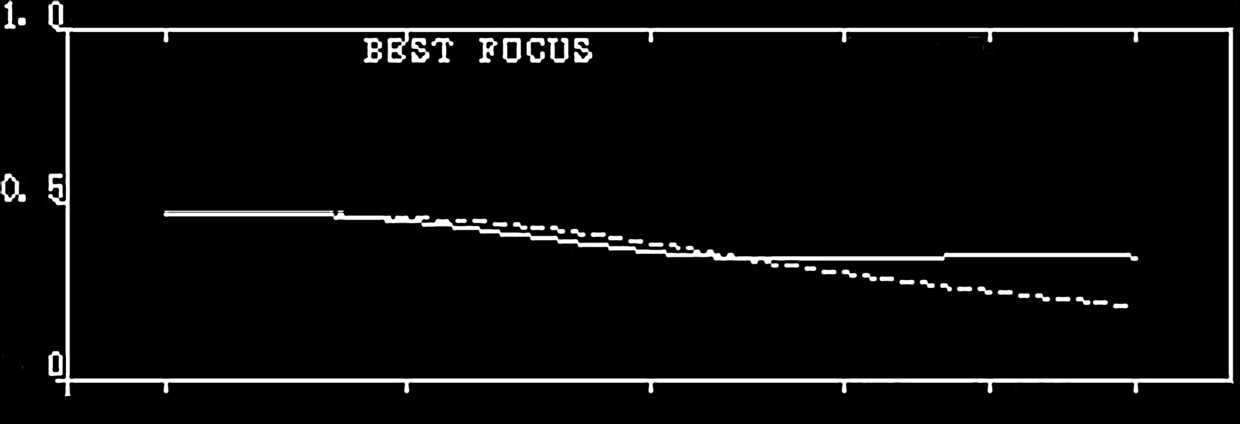
As Table 1 shows, a resolution of 100 lines/mm can easily be achieved from the center of the frame to the 21.63-mm edges of the frame. But can the lens really achieve 200 lines/mm resolution? Let's conduct a simulation.
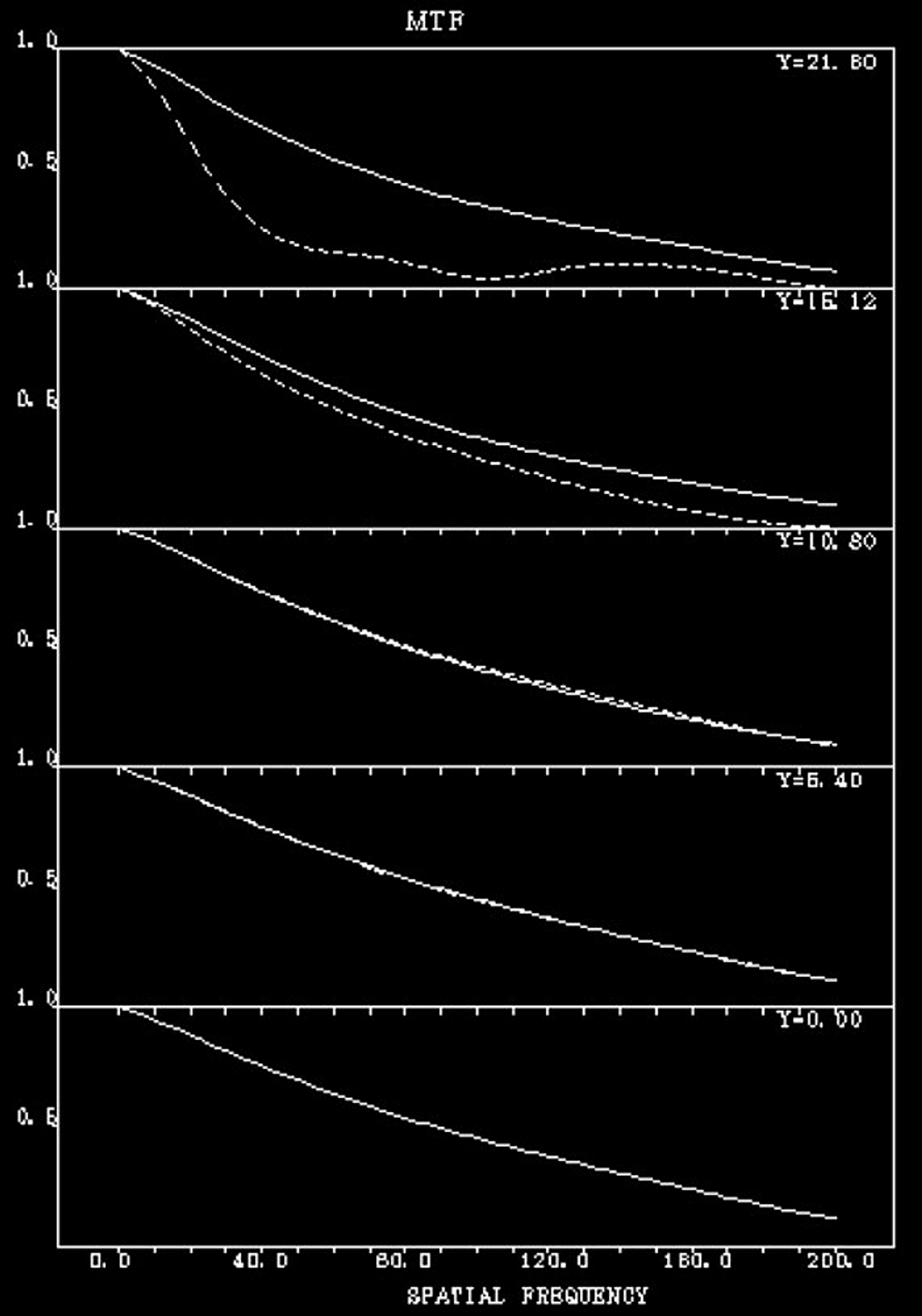
Table 2 shows a wave-optical MTF chart in which the horizontal axis represents spatial frequency. From bottom to top, the chart shows image heights of y = 0 (center), 25%, 50%, 70%, and 100% (maximum image height). What do you think? Theoretically, resolution occurs when the MTF contrast value is 10%, so we found that 200 lines/mm is resolved at an image height of up to 10.8 mm (50%). It seems that the rumored 200 lines/mm resolution of the Micro-NIKKOR C 5cm F3.5 was not unfounded. We have now verified the truth of this rumor through optical simulations based on design values.
V. Actual performance
Next let's look at results achieved with some actual images of distant scenes. I used a Nikon Z7 and FTZ mount adapter to capture the sample images for this Tale.
I will explain performance at each aperture setting in detail. Evaluations are subjective, and based on individual preferences. Please use my own evaluations merely as reference when viewing sample images.
f/3.5 (maximum aperture)
Resolution is good and consistent from the center of the frame to the edges. There is the smallest degree of blurring throughout the frame, but contrast isn't bad. Images have a neat and elegant look. There is some flare for just the right amount of image blurring, but as expected given the very low degree of chromatic aberration, the lack of color with even the smallest bokeh leaves a good impression.
f/5.6
Stopping down the aperture just one stop instantly eliminates blurring and dramatically increases sharpness. In particular, contrast is increased and flare is virtually eliminated throughout the frame. With distant subjects, maximum resolution at maximum aperture is already achieved, so it is difficult to tell whether there is any further improvement. Contrast increases, resulting in the best image quality.
f/8
Image quality seems even sharper throughout the frame. Image quality is perfect! As with f/5.6, it is unfortunate we can't assess the increase in resolution, but based on design values, we can see that the best resolution was achieved between f/5.6 and f/8 with better than 100 lines/mm throughout the frame, even under a white light source. The recommended aperture setting for this lens is f/5.6 to f/8, especially if depth of field isn't an issue.
f/11
Consistently good image quality is achieved throughout the frame, but sharpness decreases slightly beyond f/8. The lens exhibits little residual aberration, so diffraction starts to affect performance even at f/11. As one might expect with this lens, the aperture shouldn't be stopped down too much.
f/16
As blurring emerges, the drop in image quality is clearly noticeable. Diffraction is clearly beginning to have a negative effect on resolution.
f/22
There is a clear drop in resolution that is likely the result of diffraction. Stopping down the aperture is essential for controlling depth of field in some situations, such as with macro photography, but an aperture this small shouldn't be used for normal photography.
VI. Sample images
Now let's confirm these rendering characteristics with some sample photos. Once again, all sample images were captured at f/3.5 maximum aperture.
As always, I applied the [Portrait] Picture Control with minimal sharpening for more accurate evaluation of lens characteristics. I also avoided applying any special correction or sharpening adjustments. Subjects were chosen with consideration of general users' use of the lens. I tried to include both short and long shooting distances.
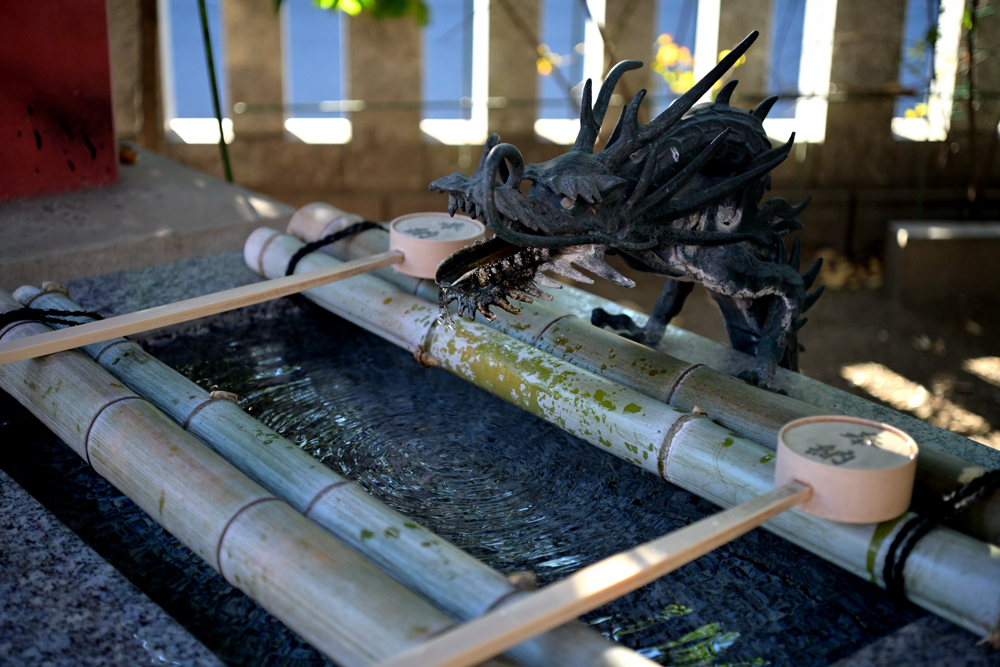
Z7 + FTZ w/ Micro-NIKKOR C 5cm F3.5
Aperture: f/3.5 (maximum aperture)
Shutter speed: 1/1000 s
Exposure compensation: -0.7 EV
Sensitivity: ISO 1250
Image quality: RAW
White balance: Auto
D-Lighting: Normal
Picture Control: Portrait
Date of capture: December 2024
Sample 1
Sample 1 was captured at a typical short distance; approximately 1 meter, I believe. Naturally, the aperture was set to f/3.5 (maximum aperture). I focused on the dragon god's teeth. Sharpness at the focal point is perfect, and there are no issues with the rendering of bokeh in the background. I had never heard that early Micro-NIKKOR lenses exhibited good bokeh characteristics. Bokeh in a scene like this that exhibits very bright highlights and dark shadows is often judged harshly, but this lens reproduces it beautifully and effortlessly without any apparent flaw.
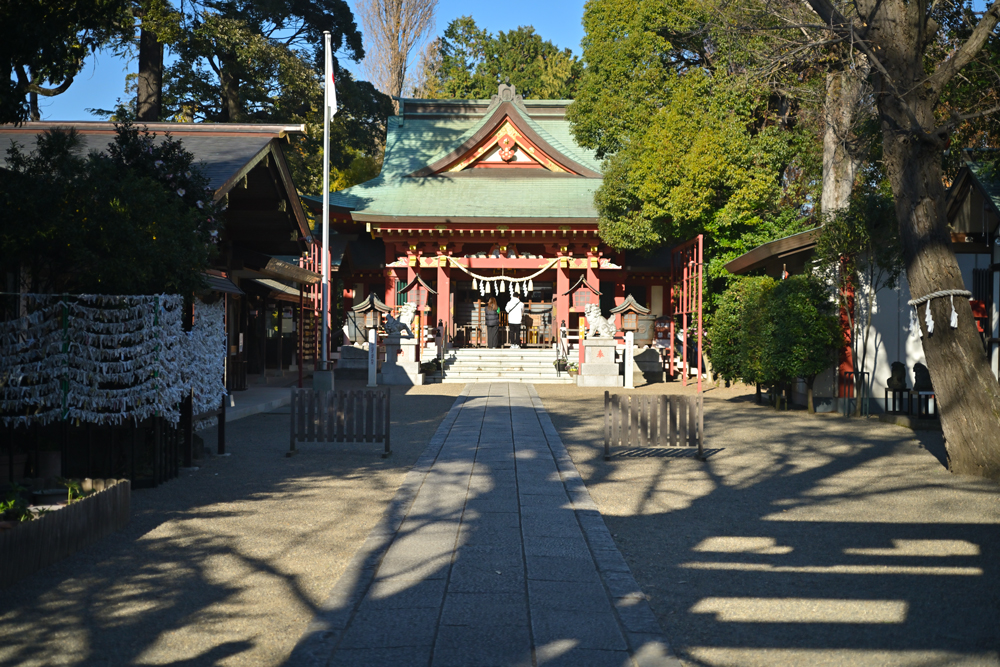
Z7 + FTZ w/ Micro-NIKKOR C 5cm F3.5
Aperture: f/3.5 (maximum aperture)
Shutter speed: 1/8000 s
Exposure compensation: -1.3 EV
Sensitivity: ISO 500
Image quality: RAW
White balance: Auto
D-Lighting: Normal
Picture Control: Portrait
Date of capture: December 2024
Sample 2
Sample 2 is a distant scene captured with focus set nearly at infinity. It was also captured at f/3.5. The sacred straw rope (shimenawa) on the front of the shrine was the focal point. Resolution is good, and even at f/3.5, image quality is sufficient. While some micro and macro lenses don't perform well with distant scenes, this image proves distance isn't a concern with this lens.

Z7 + FTZ w/ Micro-NIKKOR C 5cm F3.5
Aperture: f/3.5 (maximum aperture)
Shutter speed: 1/2500 s
Exposure compensation: -0.3 EV
Sensitivity: ISO 1250
Image quality: RAW
White balance: Auto
D-Lighting: Normal
Picture Control: Portrait
Date of capture: December 2024
Sample 3
Sample 3 is a close-up captured at a magnification of approximately -1/5x and an aperture setting of f/3.5. Focus was acquired on the nearest leaf. Look at the veins in the leaf. You can see the lens exhibits outstanding resolution. However, as this image was captured with hand-held shooting, it is unclear whether focus is accurate or not. There may have been some subject movement caused by a breeze. Bokeh is just short of the so-called double-line bokeh, so isn't especially bad.
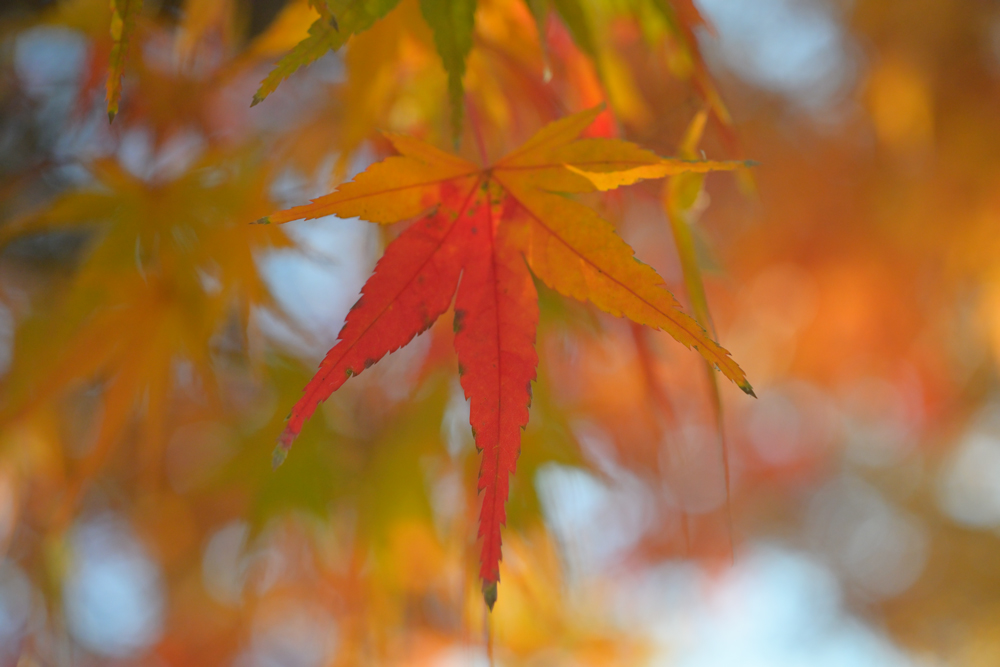
Z7 + FTZ w/ Micro-NIKKOR C 5cm F3.5
Aperture: f/3.5 (maximum aperture)
Shutter speed: 1/2500 s
Exposure compensation: -0.3 EV
Sensitivity: ISO 1250
Image quality: RAW
White balance: Auto
D-Lighting: Normal
Picture Control: Portrait
Date of capture: December 2024
Sample 4
Sample 4 is a close-up shot at an even shorter distance. I think the magnification was around -1/3x. Of course, an aperture setting of f/3.5 was used. I focused on the leaf at the center of the frame. Look at the veins in this leaf. You can see the lens exhibits outstanding resolution. This image was also captured with hand-held shooting, so focus may not be exactly on point. There may have been some subject movement caused by a breeze. Bokeh at this shooting distance really is beautiful.
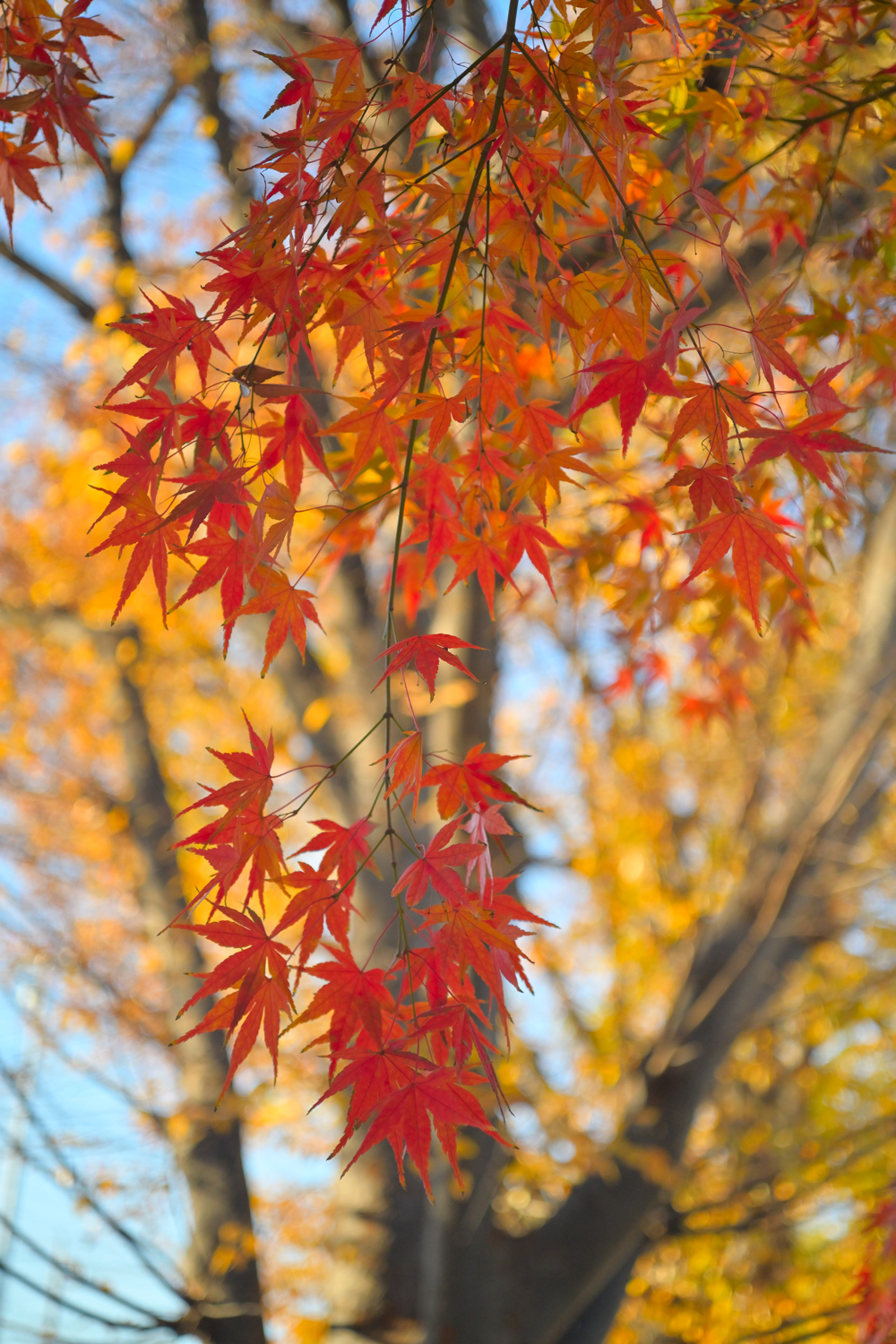
Z7 + FTZ w/ Micro-NIKKOR C 5cm F3.5
Aperture: f/3.5 (maximum aperture)
Shutter speed: 1/3200 s
Exposure compensation: -0.3 EV
Sensitivity: ISO 1250
Image quality: RAW
White balance: Auto
D-Lighting: Normal
Picture Control: Portrait
Date of capture: December 2024
Sample 5
The magnification was around -1/10x. Naturally, the aperture was set to f/3.5. The leaves were the focal point. Both resolution and contrast reproduction are good. Bokeh at this shooting distance isn't exactly beautiful, but being just short of double-line bokeh, it is more than practical.
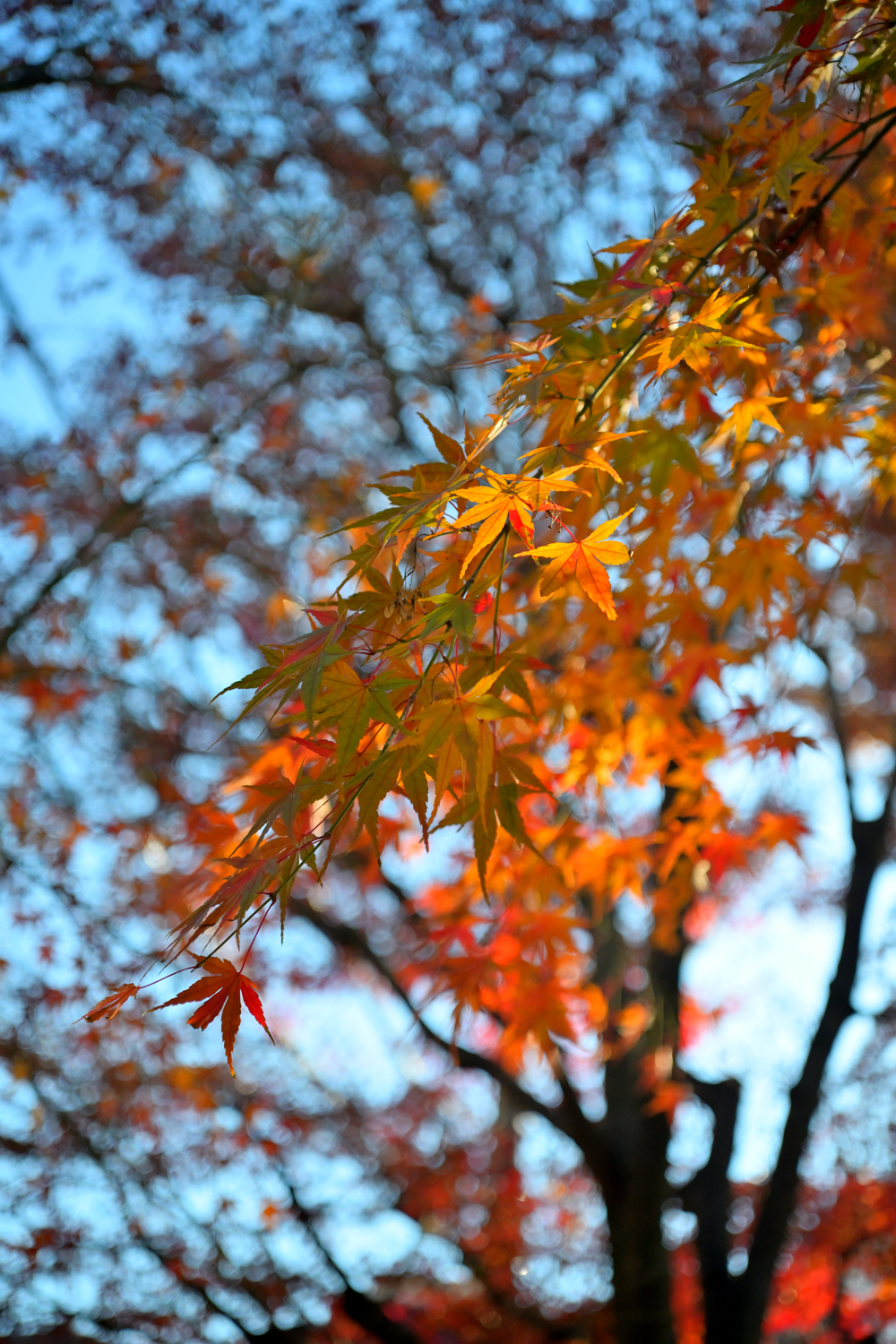
Z7 + FTZ w/ Micro-NIKKOR C 5cm F3.5
Aperture: f/3.5 (maximum aperture)
Shutter speed: 1/3200 s
Exposure compensation: -0.3 EV
Sensitivity: ISO 1250
Image quality: RAW
White balance: Auto
D-Lighting: Normal
Picture Control: Portrait
Date of capture: December 2024
Sample 6
Sample 6 was captured at a slightly greater distance than was Sample 5. The maximum aperture of f/3.5 was used. I focused on the leaves in the foreground. Both resolution and contrast reproduction are very good. As with Sample 5, the bokeh at this shooting distance isn't exactly beautiful, but being just short of double-line bokeh, it seems to be more than practical.
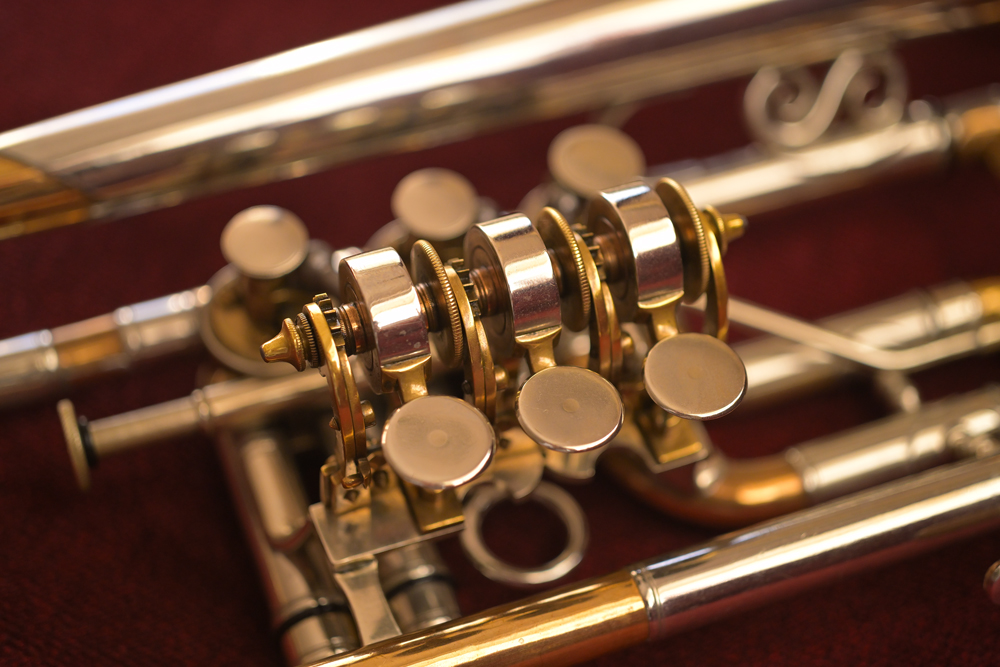
Z7 + FTZ w/ Micro-NIKKOR C 5cm F3.5
Aperture: f/3.5 (maximum aperture)
Shutter speed: 1/500 s
Exposure compensation: ±0 EV
Sensitivity: ISO 1250
Image quality: RAW
White balance: Auto
D-Lighting: Normal
Picture Control: Portrait
Date of capture: December 2024
Sample 7
Sample 7 demonstrates the true essence of Micro-NIKKOR lenses: rendering at a magnification of around -1/2x. Aperture was, of course, set to f/3.5. Focus was acquired on the screw in the foreground. Unlike the previous samples, this subject wasn't likely to exhibit any movement. While I did shoot hand-held, I was very careful to avoid camera shake. Please enlarge the image to take a closer look. Resolution and sharpness are both outstanding. Bokeh is also beautiful. The subject is definitely one that tends to induce double-line bokeh, but the image exhibits no signs of it.
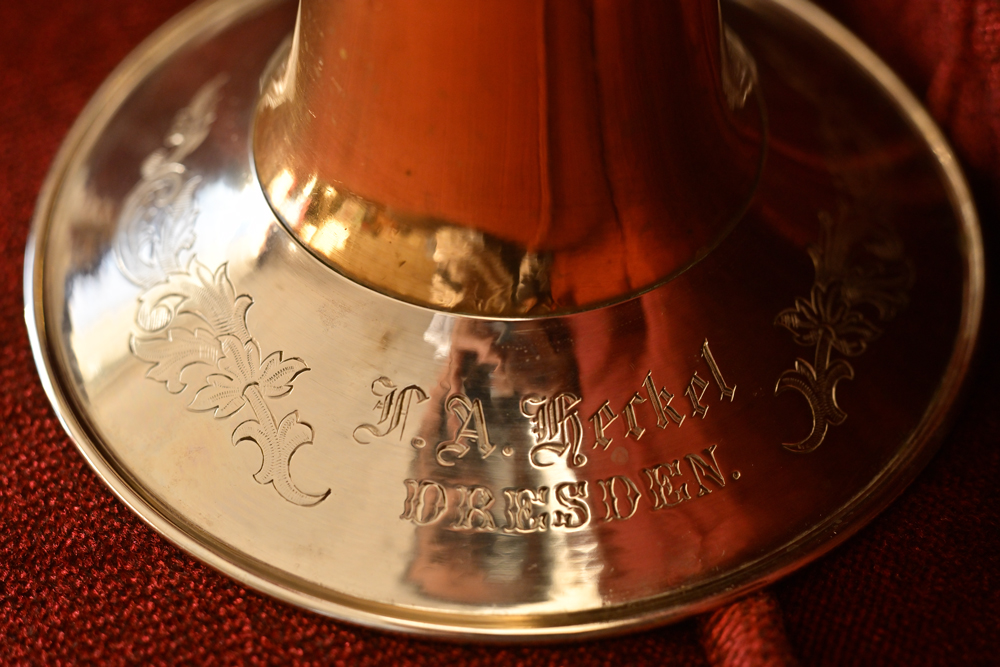
Z7 + FTZ w/ Micro-NIKKOR C 5cm F3.5
Aperture: f/3.5 (maximum aperture)
Shutter speed: 1/250 s
Exposure compensation: ±0 EV
Sensitivity: ISO 1250
Image quality: RAW
White balance: Auto
D-Lighting: Normal
Picture Control: Portrait
Date of capture: December 2024
Sample 8
Sample 8 was captured at an even shorter distance with magnifications ranging from -1/2x to nearly life size (-1x). Maximum aperture was applied. I focused on the area near the base of the grass engraving. This is another subject that isn't likely to move. Enlarge the image for a closer look. Even irregularities in the hand engraving can be seen. It is clear the lens exhibits outstanding resolution.
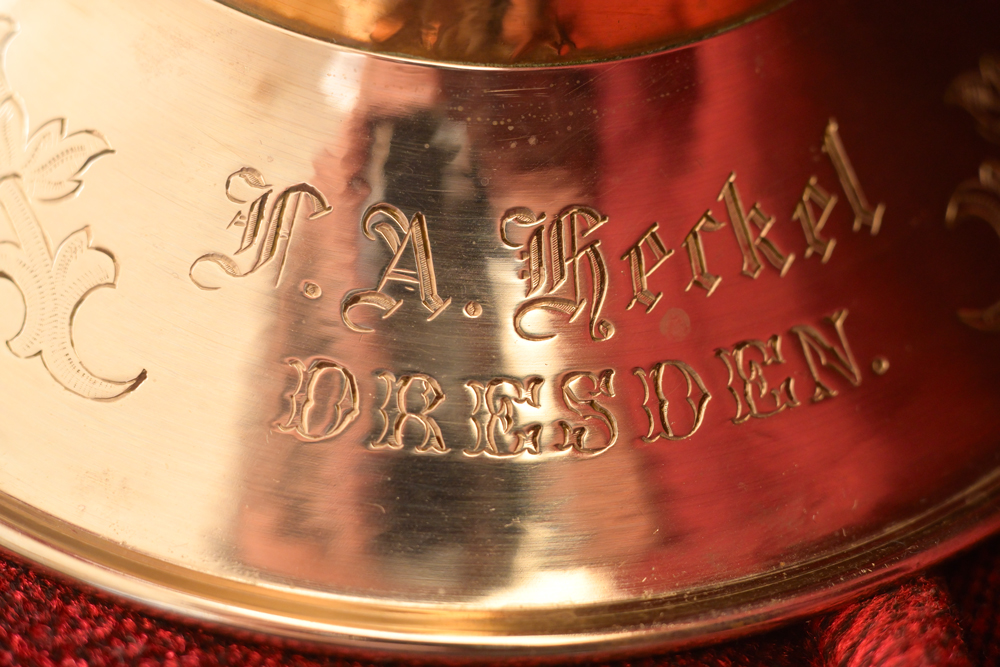
Z7 + FTZ w/ Micro-NIKKOR C 5cm F3.5
Aperture: f/3.5 (maximum aperture)
Shutter speed: 1/100 s
Exposure compensation: ±0 EV
Sensitivity: ISO 2500
Image quality: RAW
White balance: Auto
D-Lighting: Normal
Picture Control: Portrait
Date of capture: December 2024
Sample 9
Sample 9 was captured at an even shorter distance for a magnification close to life size (-1x). I took the picture at f/3.5 (maximum aperture), and focused on the third character "h" in the blackletter engraving. Again, this subject isn't likely to exhibit any movement. Enlarge the image to its actual size. Even irregularities in the manual ("hand-push") engraving are visible, as are the undulations and surface finish of the metal. The outstanding resolution is truly amazing.
Because the Micro-NIKKOR C 5cm F3.5 is capable of responding to a wide range of photographic needs, I captured sample images of everything from a distant landscape to a life-sized (-1x) close-up of a Heckel trumpet. What did you think of these photos? I hope you've realized that Wakimoto's masterpiece is not just a cold, mechanical lens that offers only excellent resolution.
A lasting impact: a tribute to the pioneers
The Micro-NIKKOR C 5cm F3.5 is the world's most powerful Micro-NIKKOR developed by the unrivaled team of Koana, Azuma, and Wakimoto. If I'm being a little dramatic, I might say that our modern society would not exist without the invention of the Micro-NIKKOR. We must not forget that the smartphones and computers we use today, as well as generative AI, were the result of the painstaking research of three people: Zyun Koana, Hideo Azuma, and Zenji Wakimoto. We, as engineers living today, owe our utmost praise and respect to the pioneers who established the foundations for technological development not only for the present, but also for the future.
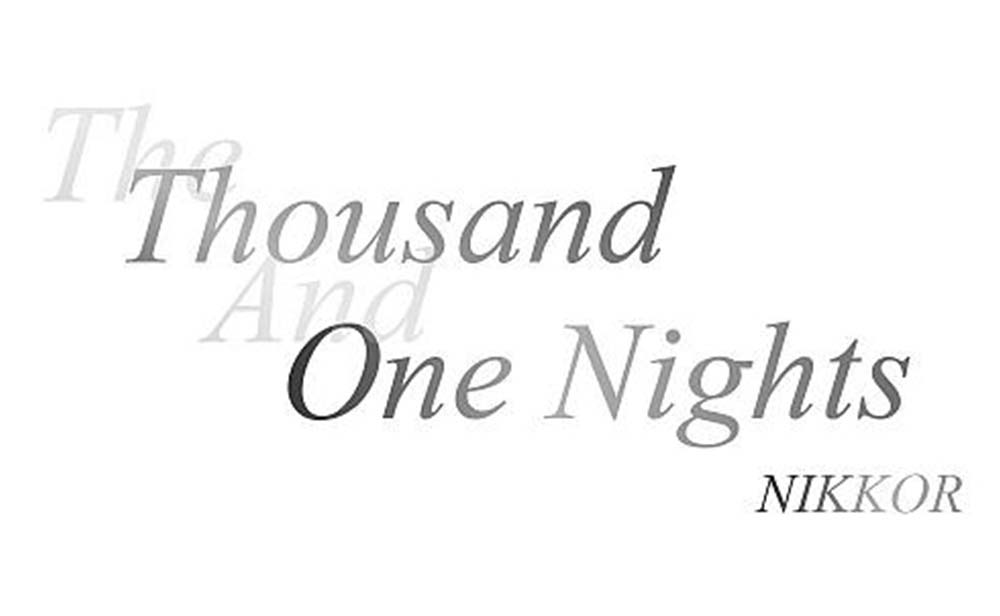
NIKKOR - The Thousand and One Nights
The history of Nikon cameras is also that of NIKKOR lenses. This serial story features fascinating tales of lens design and manufacture.

